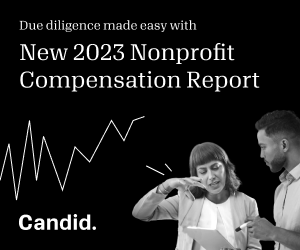Three ways philanthropies can support community development financial institutions

Over the last two years—as many businesses struggled to stay afloat amid COVID-19 lockdowns, supply chain disruptions, and staffing shortages—community development financial institutions (CDFIs) provided a lifeline to small business owners, especially women and people of color. CDFIs have a mandate to funnel much-needed responsible capital to small business borrowers in low-income communities, communities of color, and other populations facing structural barriers to credit access, and are well positioned to offer financing to these underserved borrowers as the economy continues to recover.
Investing in CDFIs is a winning strategy for philanthropic funders aiming to drive equitable economic growth and address systemic racial and gender barriers to economic opportunity. Grantmakers can play a key role in these efforts by providing more flexible capital that enables CDFIs to scale their operations to reach more socially and economically disadvantaged entrepreneurs—those whom the mainstream financial system has long failed. Most mainstream banks lend less today to small businesses than they did before the 2008 financial crisis.In fact, according to the Association for Enterprise Opportunity, 8,000 loans are declined by banks on a daily basis. In addition, women, immigrants, and people of color face structural barriers that mean they face even higher hurdles to securing a loan. Adding to the problem are alternative lenders, including predatory lenders, who have stepped in to fill the gap with products that are expensive and damaging to the health of small businesses.
While the pandemic has intensified these trends, it also has shown how CDFIs can make a real difference. The problematic rollout of the early rounds of the Paycheck Protection Program (PPP) demonstrated the limitations of big banks, which focused on their existing customers (including some large, profitable corporations) and overlooked borrowers in underserved communities. CDFIs, by contrast, deployed their PPP loans the way that Congress intended. The Small Business Administration reports that 78 percent of PPP loans made by CDFIs were under $150,000 and 40 percent were made to borrowers in low- and moderate-income areas, compared with overall program averages of 50 percent and 28 percent.
To help CDFIs reach more underserved small businesses with the capital and resources they need for start-up and growth, philanthropies can structure their funding in three ways.
First, philanthropic donors can provide CDFIs with funding that’s both patient and flexible. Patient capital would support longer loan terms and lower interest rates that help small business owners pay their loans without sacrificing growth. Flexible capital is no-strings-attached funding that allows CDFIs to better identify and target the needs of the small businesses they serve. For example, donors that provide CDFIs with loan capital funding often place strict rules around repayment; loosening these rules would mean more small business owners could qualify for a loan. The traditional notion of “credit-worthiness” has long presented a systemic barrier to women and people of color. A study analyzing data from the Ewing Marion Kauffman Foundation found that Black, Latino, and women entrepreneurs started their businesses with about half the capital of white male entrepreneurs. Reducing credit score requirements or prioritizing alternative ways of assessing creditworthiness could help expand financial inclusion and opportunity.
Second, funders can provide much-needed grant funding for operational and capacity-building efforts. If a CDFI has more funding to deploy, they need more tools to deploy it. This includes funding to hire and train additional staff and implement technological systems that create efficiencies. Many CDFIs are managing their loan portfolios with spreadsheets. Automating processes and training staff would enable existing staff to do more with the same capital and, with additional loan capital, CDFIs can scale up and more small businesses would benefit.
Third, philanthropies can increase grant funding for loan loss reserves so CDFIs can free up more funds on their balance sheet for lending. Loan loss reserves enable CDFIs to expand their risk appetite to reach the most underserved entrepreneurs. For example, loans to first-time business owners or those with lower credit scores are usually considered riskier, despite having great potential for impact. With grant-funded loan loss reserves, CDFIs can foster good financial management skills while providing entrepreneurs with an affordable financing option instead of relying on fast cash from predatory payday lenders.
Providing more philanthropic capital, in more flexible ways, will ensure that CDFIs have the tools they need to continue and expand their work of serving our nation’s small businesses—work that benefits more than the entrepreneurs. Small business owners create jobs, provide necessary goods and services, and enliven our communities. Small business ownership is also a proven path to generational wealth building that can help narrow persistent wealth inequality in our country. Philanthropic support of CDFIs is a key strategy as we look toward rebuilding and reconfiguring the economy into one that works for all Americans.
Carolina Martinez is CEO of CAMEO, California’s statewide micro-business network and leading voice for businesses with one to five employees.





